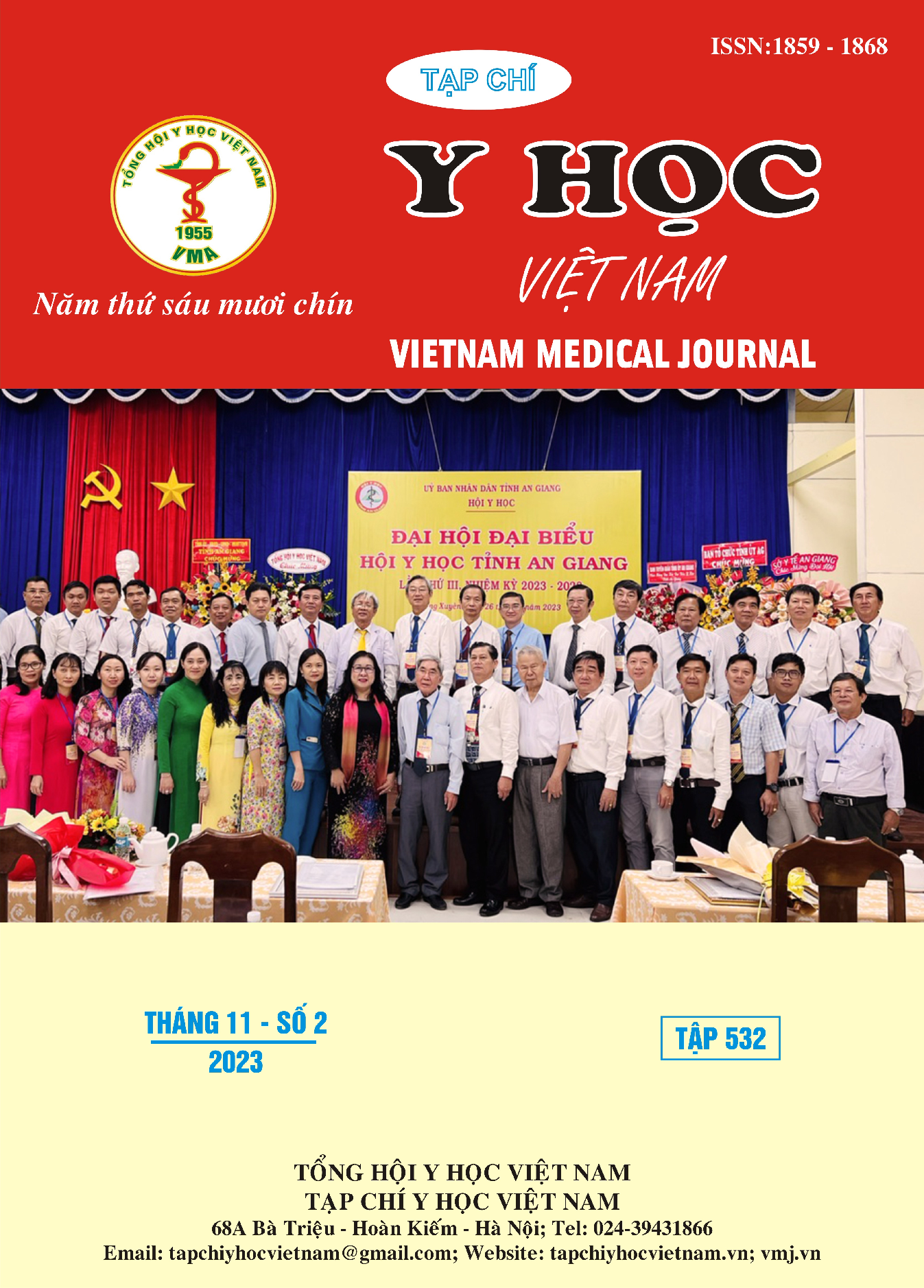THE PREVALENCE, RE-INFECTION RATES, AND GENOTYPE DISTRIBUTION OF HEPATITIS C VIRUS IN PATIENTS AT UNIVERSITY MEDICAL CENTER HO CHI MINH CITY
Main Article Content
Abstract
Introduction: Hepatitis C is a liver infection caused by the hepatitis C virus (HCV). Hepatitis C can lead to serious complications, including cirrhosis, liver cancer, and death. Hepatitis C is a treatable disease, but the success rate of hepatitis C treatment varies depending on the genotype. Patients who have successfully been treated still have a risk of reinfection because the body does not have an immune mechanism to fight against the HCV virus. Objectives: To determine the prevalence of hepatitis C infection, the rate of hepatitis C reinfection, and the prevalence of HCV virus genotypes among individuals who came for health check-ups at the University Medical Center in Ho Chi Minh City in 2020. Methods: A cross-sectional study was conducted at the University Medical Center in Ho Chi Minh City. Medical records of all individuals who came for check-ups and were tested for HCV RNA and anti-HCV were collected. Results: The study included 2177 patients with an average age of 55.5 ± 14.0 years. The proportion of positive HCV RNA was 33.76%. Genotype analysis of HCV RNA-positive cases showed that genotypes 1 and 6 were the most common, with rates of 35.52% and 18.58%, respectively. Genotype 2 accounted for 10.66%, and genotype 3 was the least common, accounting for only 0.27% of all cases. Six cases were infected with two genotypes simultaneously, accounting for 0.82%. The reinfection rate with HCV was 3.01%, with genotypes 1 and 6 being the most common. Conclusion: The prevalence and reinfection rate of hepatitis C in this study were 33.76% and 3.01%, respectively. The most common genotypes of HCV were 1 and 6.
Article Details
Keywords
prevalence, reinfection, genotype, hepatitis C.
References
2. tế, B.Y., HƯỚNG DẪN CHẨN ĐOÁN VÀ ĐIỀU TRỊ BỆNH VIÊM GAN VI RÚT C. 2021.
3. Keikha, M., et al., HCV genotypes and their determinative role in hepatitis C treatment. Virusdisease, 2020. 31(3): p. 235-240.
4. Yu, M.L. and W.L. Chuang, Treatment of chronic hepatitis C in Asia: when East meets West. J Gastroenterol Hepatol, 2009. 24(3): p. 336-45.
5. Simmons, B., et al., Risk of Late Relapse or Reinfection With Hepatitis C Virus After Achieving a Sustained Virological Response: A Systematic Review and Meta-analysis. Clinical Infectious Diseases, 2016. 62(6): p. 683-694.
6. Do, S.H., et al., High prevalences of hepatitis B and C virus infections among adults living in Binh Thuan province, Vietnam. Hepatol Res, 2015. 45(3): p. 259-68.
7. Petruzziello, A., et al., Global epidemiology of hepatitis C virus infection: An up-date of the distribution and circulation of hepatitis C virus genotypes. World J Gastroenterol, 2016. 22(34): p. 7824-40.
8. Sievert, W., et al., A systematic review of hepatitis C virus epidemiology in Asia, Australia and Egypt. Liver Int, 2011. 31 Suppl 2: p. 61-80.
9. Dunford, L., et al., Hepatitis C virus in Vietnam: high prevalence of infection in dialysis and multi- transfused patients involving diverse and novel virus variants. PLoS One, 2012. 7(8): p. e41266.


